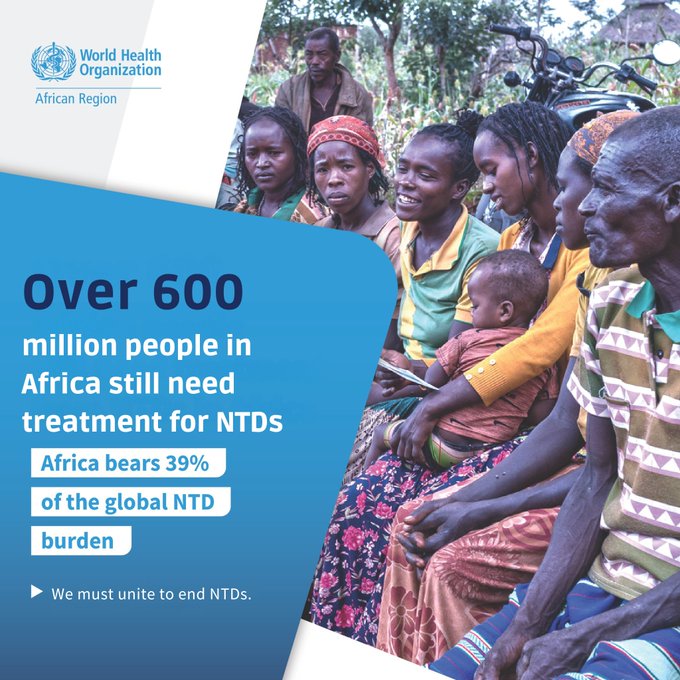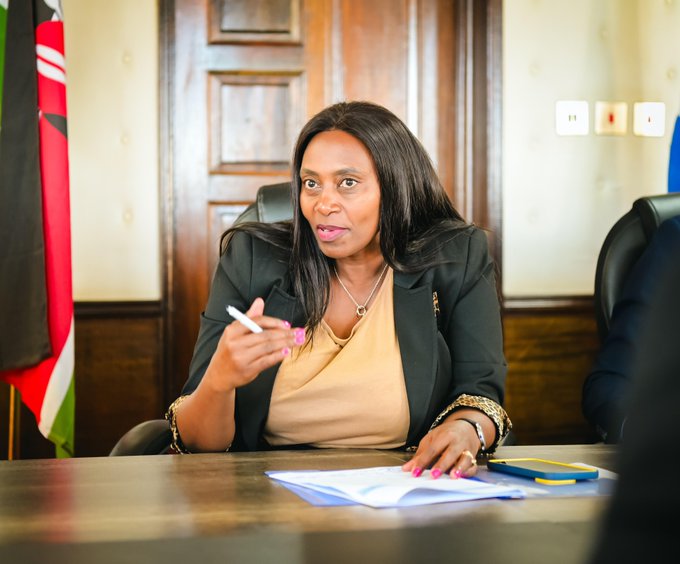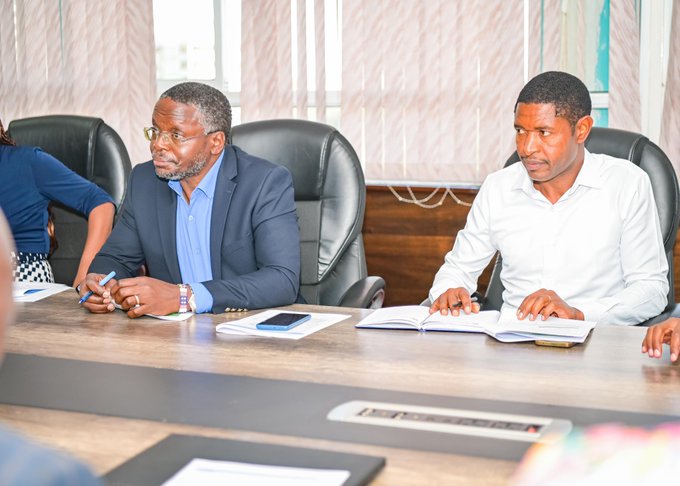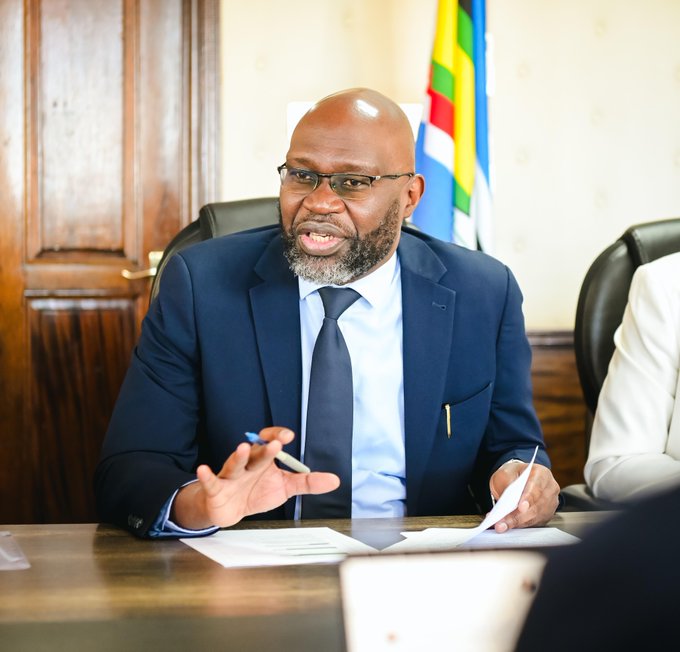NAIROBI, Kenya – Kenya’s National Master Plan for the Elimination of Neglected Tropical Diseases (2023–2027) is an active effort to combat NTDs.
In Kenya, the most common NTDs are lymphatic filariasis (elephantiasis), schistosomiasis (bilharzia), human African trypanosomiasis (sleeping sickness), and leishmaniasis.
By researching these diseases, institutions such as the Kenya Medical Research Institute (KEMRI) demonstrate the nation’s dedication to addressing these illnesses that disproportionately impact underprivileged groups. Research activities are also supported by the CGHR NTD Unit.
Kenya is moving closer to a sustainable, government-led health system by focusing on the six fundamental World Health Organisation (WHO) building blocks: leadership and governance, service delivery, health system funding, health workforce, medical products and technologies, and health information systems.
Having Community engagement and education I.e encouraging community members to participate in maintenance of water sources, strengthening stakeholder coordination to ensure there is harmony in working of government, community and non- government agencies #EndNTDsKe
In light of this, Y News focuses on two counties: Siaya County, whose collaborations to enhance research, policy development, and decision-making are rapidly eliminating the NTDs, and Kilifi County, where the devolved unit is growing primary care networks to bring necessary services closer to communities.
Why people should be afraid of Neglected Tropical Diseases
Against this background, Margaret Akoth, Community Health Promoter, Kogelo, told Y News that she learnt that a majority of Kenyans, just like the rest of the world, are living with some diseases which we have been neglected.
“And we are not even thinking about them, and they are here with us, killing our people in the community,” said Akoth.
Michael Ofire, Program Manager of Amref Health Africa, said:
“County system strengthening is principally strengthening the whole system to be resilient and to be in a position to be able to meet the health needs of the populace, and the World Health Organisation has outlined six health building blocks of our health system.”
When reached for comment, Wycliff Omondi, Head of the NTD Program in Kenya, observed that building blocks are the WHO’s thematic way of looking at how Kenya can strengthen its healthcare system.
Tackling obesity and wasting. Fighting climate risks. Ensuring medicine safety. Immunizing millions of children. Eliminating neglected tropical diseases. Stopping mother-to-child HIV transmission.These are just some of the highlights of our work for #HealthForAll.
“It looks at the infrastructure; it looks at the future; it looks at the people and the human resources. It also looks at the system; of course, you can have the people, but it can’t work. There is also a need for the products and technology, and also there are resources that come along,” explained Omondi.
How the national government is fighting Neglected Tropical Diseases
Ofire further revealed that the other thing that they are focusing on in terms of strengthening is leadership and governance.
“And here we are talking about both national and county governments; they have different roles that they play. At the national level is resource mobilisation and capacity building and ensuring that the country has resources and strategies that will enable integration,” said Ofire.
Ofire added that at AMREF Africa, they are currently working on strengthening and building the human resources for them to have a fit-for-purpose health workforce that can probably diagnose, manage and treat patients who have tropical diseases like snake diseases.
Gilbert Angore, Medical Superintendent, Marafa Level 4 Hospital, narrated that what they have done is that number one, they have strengthened the healthcare system which is the creation of more dispensaries in the communities.
“Because if you look at Magharini, it is the largest sub-county in Kilifi County because of its vast distance and kilometres and where they can access the health services,” said Angore.
Over 600 million people in Africa still need treatment for neglected tropical diseases (NTDs).Despite major progress, the fight against NTDs is far from over. Ending NTDs for good requires strong collaboration and urgent action.We must act now! #EndingDiseaseInAfrica
Meanwhile, Ofire disclosed that AMREF Africa is shifting away from a campaign bases where the organisation does a campaign-based approach where they shall do annual treatments and campaigns for treatments and prevention of some of the latent cases in the community.
“But with the integration, we want a case where we work with the two levels of governments to be able to administer medication regularly, and this will come in handy to ensure that some of the population that are missed during the campaigns can access medication during the routine treatment in the community,” Ofire disclosed.
Why county governments should engage in multidisciplinary activities
The other issue, according to Ofire, is the close coordination with the implementers at the county.
“Integration itself requires constant engagement with various counties just to be on track in terms of the indicators that you are trying to track, and this has gone well and earned ownership at that local level,” he explained further.
Angore reiterated that they had taken the mandate as a county to start the multidisciplinary team in visiting the households.
“We are not only strengthening the dispensary level but also strengthening the community health workers because we are there on the ground seeing what they are doing,” he stated.
In the fight to control and eliminate Neglected Tropical Diseases, the Deworming Innovation Fund Program in Western Kenya has partnered with unlikely champions, to ensure all eligible populations are reached with our interventions. Recognising the critical role that religion and
Down to Nyanza region, Kennedy Orenjo, County Health Director, Siaya County revealed that Siaya County has been able to eliminate such diseases as NTDs.
“Siaya County is working very closely with partnerships from the national government, which provides technical partnerships putting in mind that health was devolved and so the national government does the research, aspects of policy that will support the county governments in actualising their health interventions,” explained Orenjo.
So, within that kind of structure, Orenjo emphasised that they are bringing on board those structures that would support different aspects of dealing with NTDs and can work together to make sure that the NTDs are brought down.
Why building blocks are essential in curbing Neglected Tropical Diseases
Angore further noted that the other thing is that they have tried to strengthen reporting so that when data is captured at the community level or the facility level, it can be channeled through the health information systems within the Ministry of Health.
“This is important because its visibility within those platforms enables its visibility for decision-making,” said Angore.
While commenting on the matter, Charles Oduor, NTD Coordinator for Siaya County, said the devolved unit was strengthening the building blocks of the NDDs.
“For example, health information like you finds that the community health workers we have given them mobile phones that they can now use to collect data instead of manually. So, you find that about 90% of our health promoters we have given them phones so we can collect our data in real time, and that reduces inaccuracy in terms of timeliness, completeness, and the integrity of the data,” explained the health officer.
Akoth, who is a Community Health Promoter, Kogelo said she uses a mobile phone application which gives her the name and the sex of the victims seeking for medication.
“So, I will click, and when I get to the neglected tropical diseases and when they give me any sign, I will refer to their desires, and then I will do a manual referral,” said Akoth.
Why have most Kenyans living around water bodies been affected by biliharzia
Justin Kiringi, Community Health Promoter and Lymphatic Filariasis/Hydrocele Survivor, said:
“This thing has eaten me up for a very long time. I contracted it when I was much younger, and it bothered me too much because I loved playing football. And so, when I got to the pitch, it stressed me out too much. I searched for treatment, but back then, it wasn’t easy because I had to walk to Malindi. I also had to pay for tests and surgery out of pocket. But when the country’s government intervened, in collaboration with the Ministry of Health, the free medical camps were started in Malindi. That is when I got the help and was scheduled for an operation,” recalled Kiringi.
Right now, Kiringi volunteers as a male champion and a community health provider (CHP). He sensitises his peers with related hydroceles to get surgery so that they can go back to their normal lives.
“I have seen that the support is consistent. Right now, we are back at Marafa, and surgeries are done very well. There is no need to wait for the free medical camps. Patients are urgently operated on an as-needed basis,” disclosed Kiringi.
Joel Milambo, Focal Person for Community Health Services, Siaya County, said that they have had a high burden of neglected tropical diseases in the past.
“And we are fortunate to have this partnership with AMREF Africa to try and reduce the high burden,” he explained.
Why people living around water bodies should be cautious about their surroundings
Jason Odongo, a Bilharzia survivor, recounted how he went to the hospital and got tested, but no disease was found.
“But then a medical camp came to the shores, and I was tested; they found that I was infected with bilharzia and gave me medicine. Since then, I have not been sick again. I was used to getting into the lake without any form of protection, but from the moment I got bilharzia, right now, I will not go fishing in the lake without wearing protection,” revealed the elated Odongo.
Lucia Akongo, a Bilharzia survivor from Siaya County, disclosed that she got bilharzia from the lake water that she uses.
“I got it because of the way we use this lake water; we, the people of this village, use water from this lake directly. But this water isn’t suitable for direct domestic use. You know, you will find fishermen in this water; creatures die there; and also, unfamiliar water is disposed of into the lake,” lamented Lucia.
Our collaboration with Amref Health Africa in Kenya is centred on combating Neglected Tropical Diseases (NTDs), Malaria, Tuberculosis (TB), and public health sanitation. We recently conducted a consultative meeting with the AMREF Health Africa team led by Country Director, Dr.
According to Lucia, she was shocked to see people fetch water in a basin shower and dispose of it far away.
“Here, I see people strip naked and swim and leave their dirty linen before the wind blows the dirt away; children come with jerricans and fetch that same water and bring it home. So, I realised that this lake water should be boiled or treated. I have resolved that we need all your interventions because if this water is not treated, we will keep using it as it is,” added Lucia.
How depending on donor-funding is crippling the fight against Neglected Tropical Diseases
Geoffrey Njuhi, Program Manager, CIFF reiterated that in Kenya, NTD programs have been donor-driven, adding that this kind of dependency on external support brings fatigue because they cannot say that these resources are always available.
“Furthermore, NTDs programs in Kenya are parallel and siloed; they are not integrated in the mainstream health system. So, we wanted NTDs integrated into the health systems so that these investments, or the NTDs become cost-effective,” Njuhi said.
These services, according to Njuhi, thus become sustainable because with integration, there is a lot of government ownership.
“You know the government takes leadership, ensuring that they are integrated, and we do away with issues of NDT being parallel and siloed and also accelerate the elimination goals,” said the official.
Meanwhile, Akoth told Y News that there is a dire need for all the stakeholders in the healthcare sector to work together.
“I love AMREF Africa. They have taught us so many things, and I appreciate it. I appreciate the county government; I also appreciate it. We cannot do without them. We need them every time,” she concluded.









